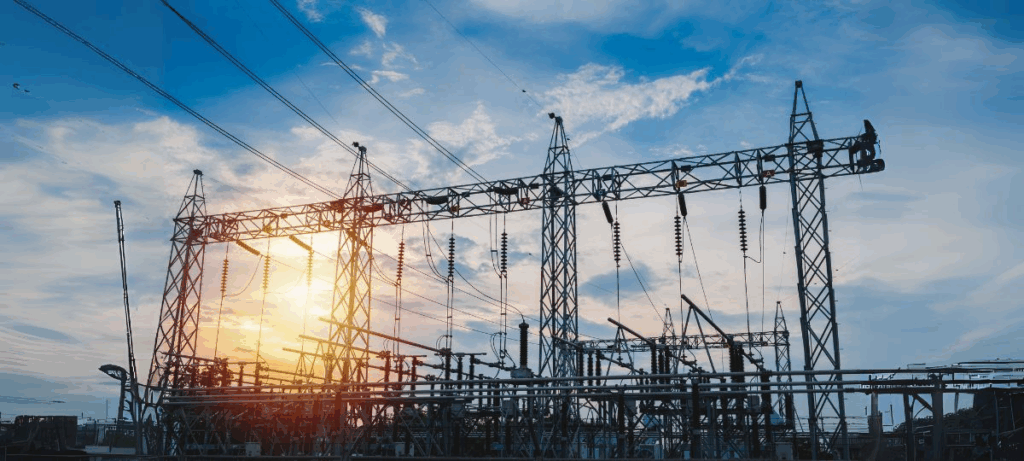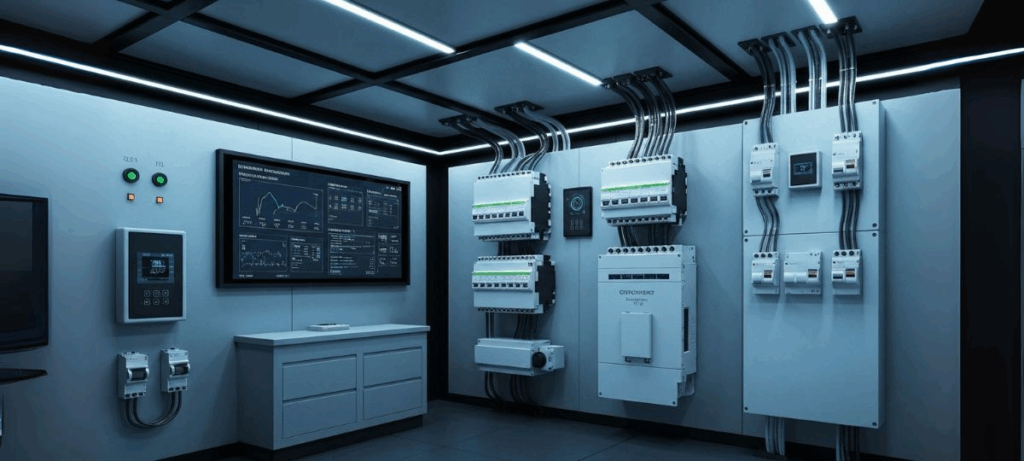Everything You Need To Know About Energy Management
Energy consumption is at an all-time high in present times. This is because we rely heavily on resources such as electricity and fuel. This can bring up a range of challenges. These include personal ones, such as dealing with hefty bills, and bigger ones, like environmental degradation. It is in everyone’s interest that they may optimize energy consumption to minimize such challenges. This is the basis of energy management solutions. They aim to implement infrastructure within a building or organization that can track, control, and conserve energy consumption. For industries and commercial buildings, this means including smart solutions built into systems like low-voltage (LV) switchgear, power distribution panels, and intelligent PDUs (power distribution units) to smooth out operations and increase efficiency. Here is everything you need to know about it.
Why is Energy Management important?

What is energy management? It is a systematic approach to the management of energy aimed at reducing the production of waste and optimizing use in order to achieve more efficient energy use and sustainability. Energy management is essential for a variety of reasons. These are:
Conserving costs for your organization
Energy Management helps reduce your energy costs. These costs can represent up to a quarter of operating costs. Therefore, prioritizing them is in your best interest. The increased energy and maintenance costs can be due to asset energy inefficiency, lack of problem visibility, and equipment damage. This is especially the case with energy costs rising more than ever as time goes by. With the situation of COVID-19, saving costs is more crucial than ever for a business. Implementing energy management strategies can help take care of this. It can also help reduce your company’s dependency on energy, which can again help conserve costs in power outages.
GoSwitchgear’s smart switchgear solutions are designed to address exactly these challenges, through enabling predictive maintenance, reducing energy wastage, and ensuring maximum uptime by intelligent load management. These solutions are part of their comprehensive energy management services, which are aimed at providing both commercial energy management solutions and industrial capabilities.
Reducing Environmental Damages
Energy consumption can help us control the damage that we inflict on the environment. This is done primarily through the reduction of carbon emissions into the air. It is our responsibility as human beings to look out for the environment, and this is one way to do so. Additionally, reducing carbon emissions can also help your organization promote a green and sustainable energy management image. So, This can help attract customers who are looking to do business with responsible companies.
Advanced power distribution units and integrated control panels from GoSwitchgear help organizations keep track of their carbon footprint, optimize load distribution, and move towards greener and more environmentally friendly options through efficient energy management control system components such as smart panels, PDUs, and surge protection device solutions.
What does Energy Management Involve?
You can sum up energy management into three steps which are:
- Collection of Data
- Display of Information
- Making Decisions.
1. Collection of Data
Collection of Data involves using hardware installed strategically around the building to collect data. This hardware includes sensors and energy meters that can help provide energy data. We will talk about some of these devices to understand them. This will enable you to make use of them for your energy management system and energy management and services.
A glimpse into energy management using energy automation with Nippen Smart Sense System using IOT (EASSY)
Digital Ammeters can be used to monitor current status that is compatible with AC and DC. Nippen provides a variety of these ammeters with models such as DA1, DA3, and DV1 DV3. They also provide voltmeters with various features such as multiple connection inputs and memory retention for many years. EM3060 is one such model that can be ideal for monitoring voltage. Honeywell energy metering solutions also deserve a shoutout in this aspect.
Modern switchgear panels offered by GoSwitchgear feature built-in digital meters, energy loggers, and advanced communication protocols like Modbus RTU or TCP/IP, permitting real-time monitoring and historical data analysis. These systems can also be easily combined with energy management system for commercial building and industrial setups, and building management systems and SCADA.
Data collection is not restricted to meters, however, and also requires other infrastructure. This includes panels and distribution boards as installation places. GoSwitchgear’s low-voltage distribution boards and smart PDUs provide the ultimate platform for installing such equipment. Using Modbus RS 485, the information can be transmitted over serial lines to an IoT Device (ST-11). This device can then transmit the data wirelessly to a remote server that acts as a cloud. Software applications can then access this data and turn it into information to display to users. This is where the second step comes into play.
2. Display of Information
Applications developed for energy management can easily integrate with a cloud device to access the data provided by the hardware. These applications can help make sense of this information and convert it into useful information displayed in various ways. Here are some of the ways they can help:
- They can provide real-time consumption performance to an organization by providing trends, effective energy use rates, and equipment performance monitoring.
- So they can also help deal with tariff optimization by analyzing and comparing load-shift optimization and load shedding predictions.
- They can provide energy usage broadcast solutions by providing various alerts, reports, and statuses. These include daily consumption reports, tariff reports, energy utilization reports. They can also provide equipment statuses and any relevant alerts.
GoSwitchgear’s software platform allows clients to visualize energy performance across multiple facilities, set consumption benchmarks, and receive automated alerts for any abnormalities or inefficiencies that may be present. Remote dashboards provide access to energy KPIs from anywhere in the world, allowing for real-time decision-making. These tools help managers implement better energy management strategy and make informed decisions.
The information can be vital for organizations to make various decisions and develop solutions for their energy consumption. This is where the third and final step comes in.
3. Making Decisions
This is where the practicality of energy management comes into play. It involves using human expertise to look at the information displayed by applications. They can use this to come up with solutions. More modern management solutions make use of big data analytics to come up with the best solution. Histograms and tables can help people understand the spread of data. Additionally, you can use visual alert systems to isolate any faults in systems so you can fix them and conserve energy. Implementing machine learning AI can help, as it can provide real-time advice quickly. Testing Techniques For Energy Management also play a vital role in this stage by ensuring the effectiveness of energy-saving measures and helping validate decisions based on accurate data. This will ensure your organization can dedicate more time to other tasks while conserving energy.
GoSwitchgear’s AI-driven analytics and machine learning engines can detect usage anomalies, predict maintenance needs, and optimize system efficiency automatically. Empowering facility managers to make faster decisions and enhancing energy management for productivity.
Energy Management Options for Modern Switchgear and Power Systems

Upgrading electrical infrastructure brings with it a common challenge:
How to improve the efficiency and reliability of existing switchgear and power distribution systems whilst also being able to manage energy effectively?
GoSwitchgear offers solutions specifically designed to meet these needs by utilizing smart energy.
For facilities ranging from manufacturing plants and data centers to commercial buildings and industrial operations, we provide a range of technologies and support energy management services that deliver measurable results:
- Energy-Efficient LV Switchgear: Our low-voltage switchgear is built to reduce energy waste and improve system visibility. It features built-in metering, load monitoring, and communication tools for live system tracking and identifying any faults. This is a prime example of industrial energy management as well as commercial energy management.
- Advanced Power Distribution Units (PDUs): Designed for precision and reliability, our PDUs offer circuit-level energy monitoring. This allows businesses to pinpoint exactly where energy is being used and also identify where it can be saved. These PDUs contribute to better business energy management by delivering detailed consumption data.
- Custom Control Panels with Communication Capabilities: We supply control panels that are compatible with widely used protocols such as Modbus and BACnet, ensuring smooth incorporation with existing building management systems. These panels also support remote monitoring, data logging, and real-time alerts for system irregularities. This integration forms part of a comprehensive energy management control system.
- Easy EMS Integration: All GoSwitchgear hardware works simultaneously with centralized energy management software. Users can access dashboards remotely to monitor and analyze energy data across one or multiple sites, helping to make better decisions at every level. This highlights the importance of energy management system in today’s technology-driven facilities.
- Retrofitting and Upgrade Support: Whether you’re operating with older equipment or newer setups, our team can deliver retrofit solutions that add advanced monitoring and automation functions without requiring a complete system replacement. This ensures ongoing commercial property energy management and adherence to evolving standards.
By combining reliable energy management products with expert guidance and available technical support at all times. GoSwitchgear helps you get more from your existing infrastructure, with less energy waste and lower long-term costs. The benefits of energy management and the benefits of energy management system include cost savings, sustainability, and improved operational efficiency.
In conclusion
Energy management is a crucial factor for businesses and organizations to consider. This is for two primary purposes, as it helps them save costs and fulfil their responsibility of protecting the environment. You can do this through three main steps. These are: collecting data through hardware, converting it into information to display, and making decisions according to it. We have also talked about some of the hardware involved to have an idea of some products you can implement.
GoSwitchgear’s consistent solutions, from intelligent LV switchgear to advanced PDUs and integrated software platforms, are particularly designed to help businesses like yours take control of energy usage. Our clients have received substantial results, including a reduction in energy bills and significant improvements in power reliability.
If you are interested in how GoSwitchgear can help optimize your facility’s energy performance Contact our experts today for a free consultation or request a custom quote.
Download our Energy Management Guide to explore best practices and steps accommodated for industrial and commercial buildings.










Leave a Reply